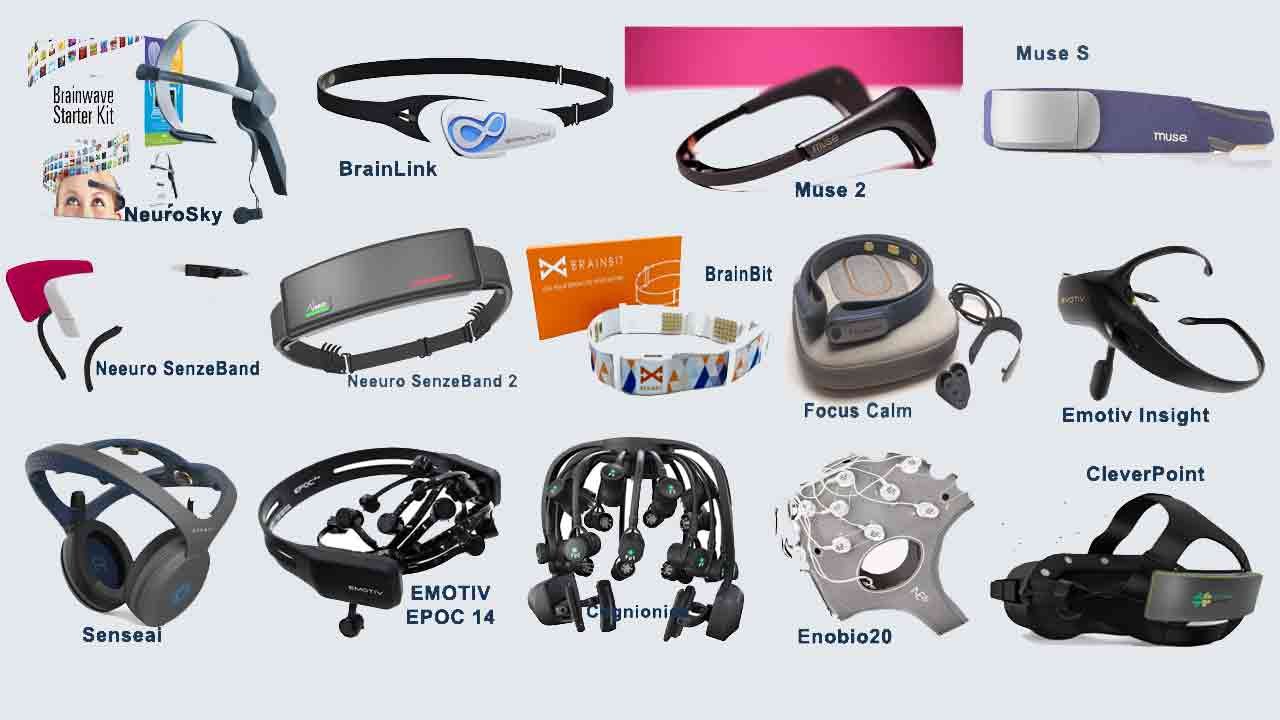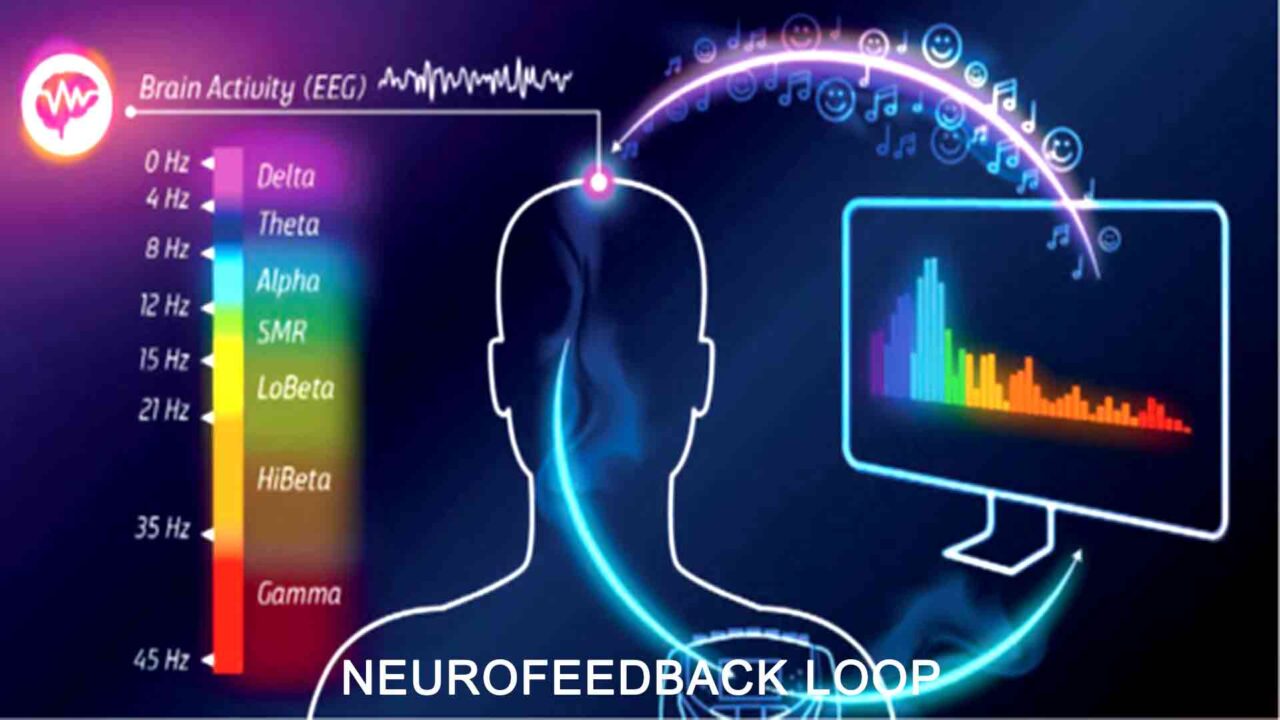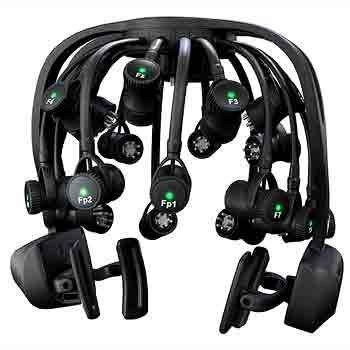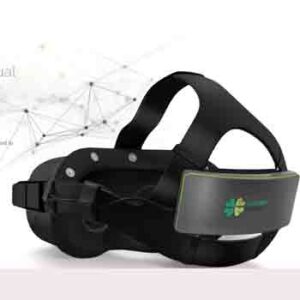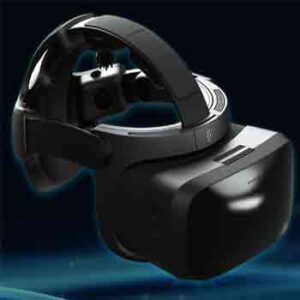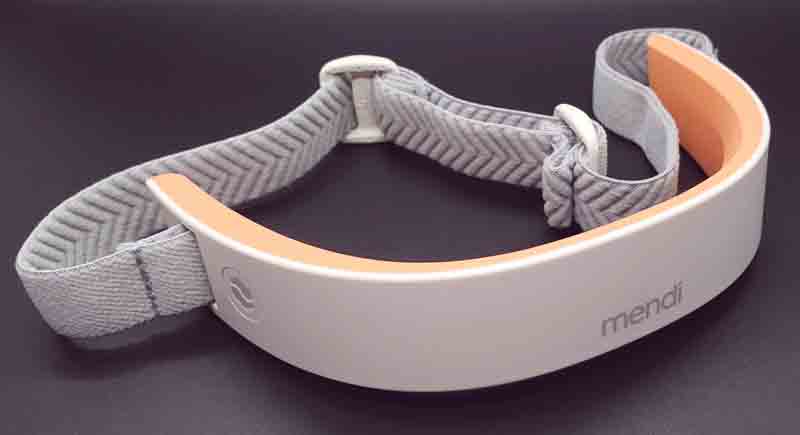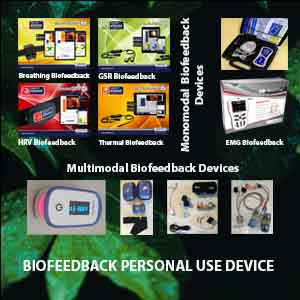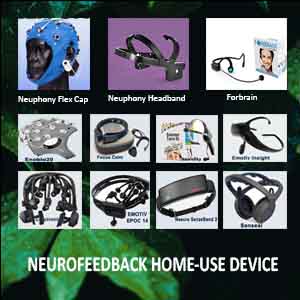Neurofeedback at Home Devices
Neurofeedback at home transforms how individuals approach brain training, making it easier to experience the benefits of neurofeedback therapy at home. With advancements in technology, neurofeedback training at home is now accessible to anyone interested in improving mental focus, reducing stress, or enhancing overall well-being. This article will explore the key features, benefits, and considerations of using neurofeedback devices at home, helping you find the right tools for a successful, personalized training experience.
Table of Contents
Toggle- Neurofeedback at Home Devices
- Introduction to Neurofeedback at Home Devices
- The science behind neurofeedback and how it works
- Indication for use of neurofeedback at home
- Contraindications for use neurofeedback therapy at home
- Safety and ethical considerations of using neurofeedback training at home
- Classification of available in the market neurofeedback at home devices
- Considerations for selecting the right device for neurofeedback at home
- Practical guidelines for effective utilization of neurofeedback at home devices
- FAQs: Neurofeedback at Home Devices
Introduction to Neurofeedback at Home Devices
This article delves into the exciting world of neurofeedback at-home devices, exploring their potential benefits, considerations for selecting suitable devices, and practical guidelines for effective utilization. Whether you’re seeking to improve focus, manage stress, boost creativity, or unlock your brain’s untapped potential, understanding the fundamentals of neurofeedback and how to use these devices properly can be the key to achieving your cognitive goals.
We will begin by unraveling the science behind neurofeedback and how it works. Neurofeedback operates on the principle of real-time feedback from brain activity, allowing users to gain insight into their brainwaves and mental states. Users can learn to regulate their brain activity by analyzing these brainwave patterns, improving emotional regulation, cognitive function, and overall mental clarity.
Next, we will explore the various types of neurofeedback home devices available today. The options, from wearable headsets to smartphone apps and home-based EEG systems, can be overwhelming. Understanding the differences between these devices and their respective features will empower you to make an informed decision that aligns with your specific needs and goals.
Effective Use and Considerations for Neurofeedback
Choosing a suitable home neurofeedback device is essential, but using it effectively is equally crucial. Our article will provide practical tips and guidelines to ensure you maximize the benefits of neurofeedback training. From setting realistic goals to establishing a consistent training routine and tracking your progress, we will equip you with the tools to make your neurofeedback journey successful.
Moreover, we will address the safety and ethical considerations of using neurofeedback training at home. These devices have proven to be generally safe. However, understanding and mitigating potential risks is essential for a positive and secure experience.
The final section will examine the current scientific research on neurofeedback’s effectiveness and limitations. Neurofeedback has shown promising results in many areas. However, it’s essential to grasp the full scope of its applications and manage expectations realistically.
Join us for an enlightening exploration of neurofeedback devices for home use. We bridge the gap between cutting-edge neuroscience and practical self-improvement. Whether you’re a curious beginner or an experienced user seeking deeper insights, our comprehensive guide is here to empower you. You’ll gain the knowledge to make informed choices and unlock the full potential of your mind. Get ready to embark on self-discovery and mental empowerment with neurofeedback.
The science behind neurofeedback and how it works
The science behind neurofeedback and how it works revolves around the principles of brainwave activity and operant conditioning. Neurofeedback is based on the understanding that our brain generates electrical patterns known as brainwaves, which correspond to different mental states and cognitive functions.
During a neurofeedback session, electrodes or sensors are placed on the scalp to measure brainwave patterns using electroencephalography (EEG). The EEG data is then processed in real-time, and the information is presented to the user as visual or auditory feedback.
Neurofeedback is a home-use device that takes advantage of the brain’s ability to change itself through a process known as Neuroplasticity. It utilizes the same learning process when we acquire a new skill. The brain learns by forming connections between nerve cells and utilizing critical pathways that connect different locations in the brain.
Understanding the Central Concept of Neurofeedback
The central concept of neurofeedback is operant conditioning, a learning process where individuals modify their behavior based on feedback from their environment. In neurofeedback, users are provided with real-time information about their brainwave activity, and they learn to self-regulate and optimize their brain function to achieve desired mental states.
For instance, if someone wants to improve their focus and attention, they might engage in a neurofeedback exercise where they are instructed to concentrate on a specific task. When their brainwave patterns indicate a state of focused attention, the neurofeedback system will reward them with positive feedback, such as a pleasant sound or a visual cue. Over time, due to neuroplasticity, the brain learns to associate the desired brainwave patterns with positive feedback, reinforcing the ability to sustain focus and attention.
The Benefits and Considerations of Neurofeedback Training at Home
This neurofeedback training process helps individuals become more aware of their brain’s activity and gain greater control over their mental states. By practicing neurofeedback therapy at home, users can learn to shift their brainwave patterns to achieve specific outcomes, such as reducing stress, managing anxiety, or enhancing creativity.
The more frequently you utilize these pathways, the better the brain performs the associated task. This type of learning is one in which responses become controlled by their consequences. Neurofeedback offers the perfect learning conditions since it facilitates awareness of when the brain is producing healthier brainwave patterns, provides reinforcement for positive change, and provides multiple opportunities for practice during a training session.
It is important to note that neurofeedback is not a one-size-fits-all solution, and the effectiveness of the training can vary from person to person. Individual differences in brainwave patterns, learning abilities, and the complexity of the target cognitive function can influence the outcomes of neurofeedback sessions. Nonetheless, ongoing research and technological advancements continue to refine this revolutionary approach, offering promising opportunities for personal growth and cognitive enhancement.
The Effectiveness and Mechanics of Neurofeedback
Neurofeedback has been researched and successfully used in the US and Europe for decades, and its effectiveness has been proven in numerous studies by universities worldwide.
The brain’s electrical activity is divided into wavebands representing a specific functionality and frequency. Depending on the situation in which you are, the wave ranges are differently pronounced, resulting in individual characteristics of the brain activity. Sitting relaxed on the couch, the composition of the wavebands differs from the composition that can be observed in your EEG (electroencephalogram) during a stressful examination task. Neurofeedback divides the electrical activity of your brain into its frequency bands and displays the proportion of each frequency band in the total spectrum.
Indication for use of neurofeedback at home
Versatile Applications of Neurofeedback at Home
Neurofeedback therapy at home can be a versatile tool with numerous indications, providing individuals the opportunity to address various cognitive, emotional, and behavioral challenges. Here are indications for using neurofeedback therapy at home:
- General Well-being and Mindfulness: Neurofeedback training at home offers a pathway to personal growth, mindfulness, and improved overall well-being by fostering a deeper understanding of the mind-body connection.
- Attention Difficulties: Individuals struggling with attention deficits, such as those diagnosed with ADHD, may find neurofeedback training helpful in improving their ability to concentrate and sustain focus on tasks.
- Enhancing focus and concentration.
Cognitive and Emotional Performance Enhancement
- Cognitive Performance Enhancement: Neurofeedback training at home can benefit students, professionals, and anyone seeking to optimize their cognitive abilities, memory retention, and problem-solving skills.
- Memory improvement and retention.
- Enhancing creativity and problem-solving abilities.
- Improving academic performance in children and adolescents.
- Peak Performance Training: Musicians, surgeons, and other performers can use neurofeedback to enhance their performance by focusing on brainwave patterns associated with peak mental states.
- Enhancing athletic performance and sports skills.
- Improving self-confidence and self-esteem.
- Emotional regulation and mood stabilization. Neurofeedback is beneficial for individuals working on emotional regulation, helping them recognize and modulate their emotional responses effectively.
Managing Stress and Other Conditions
- Stress and Anxiety Management: Stress reduction and relaxation training. Neurofeedback can assist individuals dealing with stress, anxiety, and related disorders by promoting relaxation and teaching the brain to achieve calmer states.
- Sleep Disorders. Improves sleep quality in insomnia. Neurofeedback may be effective for those experiencing sleep disturbances, as it can encourage the brain to adopt brainwave patterns conducive to restful sleep.
- Managing symptoms of depression.
- Reducing symptoms of phobias and fears.
- Migraines and Headaches: Some individuals with recurrent migraines or tension headaches may explore neurofeedback as a complementary approach to alleviate symptoms.
- Coping with chronic pain.
- Managing symptoms of post-traumatic stress disorder (PTSD). Neurofeedback has been studied as a potential intervention for managing symptoms of PTSD, assisting in trauma processing and emotional healing.
- Alleviating symptoms of obsessive-compulsive disorder (OCD).
- Reducing irritable bowel syndrome (IBS) symptoms through stress management.
- Addressing symptoms of Tourette syndrome and tic disorders.
- Supporting addiction recovery and relapse prevention.
- Enhancing social skills and communication abilities.
- Coping with grief and emotional trauma.
- Managing symptoms of epilepsy and seizure disorders.
- Promoting brain health and cognitive aging.
It is essential to note that while neurofeedback training at home can be a valuable tool for self-improvement, it is not intended to replace professional medical or psychological care. Individuals with severe medical conditions or complex mental health issues should consult with qualified healthcare providers or mental health professionals before embarking on neurofeedback training at home. Additionally, understanding the specific indications and tailoring the training to individual needs can maximize the benefits and ensure a safe and effective neurofeedback experience.
Contraindications for use neurofeedback therapy at home
Understanding Contraindications for Neurofeedback
Neurofeedback at home can be a powerful and safe tool for many individuals, but specific contraindications and considerations must be considered before using these devices. Contraindications are conditions or situations in which neurofeedback at home may not be advisable or potentially harmful. Some common contraindications include:
- Severe Mental Health Conditions: Individuals with severe mental health conditions, such as severe depression, schizophrenia, bipolar disorder, or psychosis, should not use neurofeedback therapy at home without professional supervision. Neurofeedback may not be appropriate as the sole intervention for these conditions and should be integrated with other therapies.
- Seizure Disorders: People with a history of epilepsy or seizure disorders should use neurofeedback with caution. Although neurofeedback can be used to manage some types of seizures, it should be done under the guidance of a healthcare professional to avoid triggering seizures.
Medical Considerations for Neurofeedback Use
- Recent Head Injuries or Concussions: Neurofeedback involving brainwave measurement can be sensitive to head injuries. Individuals who have recently experienced a head injury or concussion should avoid using neurofeedback at home until they have fully recovered and received clearance from a medical professional.
- Neurological Disorders: Certain neurological conditions, such as brain tumors or lesions, may require specific considerations and medical clearance before using home neurofeedback devices.
- Pacemakers or Implants: Individuals with pacemakers or other medical implants may need to avoid specific neurofeedback devices that use electrical stimulation to prevent interference or potential risks.
Special Considerations and Recommendations
- Children and Adolescents: While neurofeedback can benefit children and adolescents, ensuring that the devices used are appropriate for their age and developmental stage is essential. Professional guidance is recommended for young users.
- Cognitive Impairment: Individuals with severe mental impairment or developmental delays may not be suitable candidates for using neurofeedback at home without appropriate support and guidance.
- Pregnancy: Pregnant individuals should be cautious when using neurofeedback devices, as there may be potential risks or unknown effects on the developing fetus.
- Substance Abuse or Addiction: Neurofeedback may not be the primary intervention for individuals with substance abuse or addiction issues and should be used as part of a comprehensive treatment plan.
- Unstable Medical Conditions: People with unstable medical conditions or serious medical concerns should consult with their healthcare provider before using neurofeedback at home.
It is crucial to consult with a qualified healthcare professional or mental health practitioner before using neurofeedback therapy at home, especially if there are any pre-existing medical or psychological conditions. They can help assess whether neurofeedback is a suitable and safe option and provide guidance on effectively incorporating it into an individual’s overall treatment plan, if appropriate.
Safety and ethical considerations of using neurofeedback training at home
Neurofeedback training at home can offer various benefits, but it also comes with safety and ethical considerations that must be carefully addressed. Here are some essential points to consider:
- Professional Guidance: Neurofeedback training should ideally be supervised or guided by a qualified healthcare professional or certified neurofeedback practitioner. They can ensure the training is appropriate for the individual’s needs, monitor progress, and adjust as needed.
- Individual Differences: People’s brains and cognitive functions vary widely. What works well for one person may not be suitable or safe for another. Tailoring neurofeedback protocols to each individual’s unique needs is essential to avoid adverse effects.
Medical and Device Considerations
- Pre-existing Conditions: Individuals with certain medical conditions or neurological disorders should seek professional advice before starting neurofeedback at home. Conditions such as epilepsy, severe migraines, or traumatic brain injuries may require specialized protocols or even contraindicated neurofeedback training.
- Quality of Devices and Apps: Ensure that a home neurofeedback device or app you use is from a reputable brand and has been validated for safety and efficacy. Low-quality or poorly calibrated devices may provide inaccurate feedback and potentially lead to adverse outcomes.
- Training Parameters: It is crucial to follow appropriate training parameters and guidelines to prevent overstimulation or other adverse effects. A professional should set the duration, frequency, and intensity of neurofeedback sessions based on the individual’s needs and responses.
Ethical Considerations and Informed Consent
- Potential Side Effects: While neurofeedback is generally considered safe, some individuals may experience side effects such as temporary headaches, dizziness, or increased emotional sensitivity. These side effects should be monitored and reported to a healthcare professional.
- Informed Consent: Individuals engaging in neurofeedback at home should provide informed consent and understand the training’s potential benefits, risks, and limitations. They should also be aware of when to seek professional guidance.
- Data Privacy and Security: If using a neurofeedback app or device that collects personal data, individuals should ensure that their privacy is protected and that their data is secured.
- Ethical Considerations: Neurofeedback practitioners and developers of neurofeedback devices or apps should adhere to ethical guidelines, ensuring transparency, competence, and patient autonomy.
- Minors and Vulnerable Populations: Special considerations must be taken when using neurofeedback at home with minors or vulnerable populations. Professional supervision and informed consent from parents or guardians are vital in such cases.
While neurofeedback at home can be safe and effective, it is essential to approach it with caution, seek professional guidance when needed, and prioritize individual safety and well-being. Consulting with a healthcare professional or certified neurofeedback practitioner is crucial to ensure proper assessment, training protocols, and monitoring during the neurofeedback journey.
Classification of available in the market neurofeedback at home devices
Distinction Between Medical and Non-Medical Uses of Neurofeedback
Neurofeedback is used for both medical and non-medical uses, and the dividing line between them may be thin. Non-medical application of neurofeedback with a home use device can be considered primarily as personal improvement and conditioning for the brain and mind: to improve relaxation, attention, focus, concentration, and self-awareness, or as an adjunct to meditation, counseling, hypnosis, or achieving altered states of consciousness. It can be done without professional intervention. In cases where it is desired to relieve the conditions of a medical problem, professional help should be sought. It is a fact that neurofeedback systems are designed to allow the user to control a computer for recreational, educational, or entertainment purposes and are not medical instruments. However, if direct benefits are claimed for relaxation or relief from the symptoms of disorders, then the device is considered medical.
Similarities and Differences in Functionality
In the nonclinical embodiment, most of the same functions and capabilities are present, but they are presented in the context of an educational and recreational device. It is nonetheless true that the actual benefits may be essentially the same in both embodiments depending on how the user configures and applies the device. However, the labeling and claims are different. The same instrument is being provided in both cases but with different intent.
The difference between medical and non-medical embodiments of NFB devices lies primarily in the claims and the user’s expectations and applications.
For example, although neurofeedback can be used to improve attention and concentration, and this can be considered a personal improvement application, in cases of suspected or diagnosed Attention Deficit Hyperactivity Disorder, the use of this procedure might be regarded as a medical procedure.
It may thus be argued that neurofeedback treatment intended to reduce the symptoms of ADHD, especially when the removal from stimulants (Ritalin, etc.) is desired, is being used in a medical context. However, if a parent, teacher, or counselor uses neurofeedback in a home or educational setting to educate a child on how to reach a state of relaxed attentiveness, the treatment may be considered education, not treatment.
Neurofeedback home devices available in the market can be classified into three main groups based on their primary technology and functionality:
EEG-Based Home Neurofeedback Devices
Wearable EEG Headsets
Wearable EEG headsets are lightweight and user-friendly devices that utilize electroencephalography (EEG) sensors to measure brainwave activity. These headsets often consist of a headband or cap with embedded electrodes that contact the scalp. They connect wirelessly to smartphones or computers, providing real-time feedback and neurofeedback training exercises through dedicated apps. Wearable EEG headsets offer convenience and portability, making them suitable for various cognitive and emotional training needs.



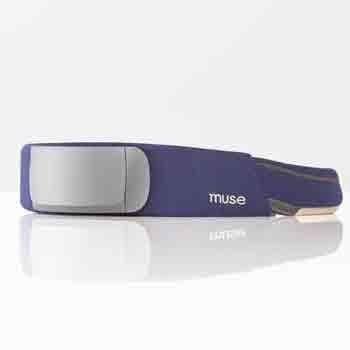
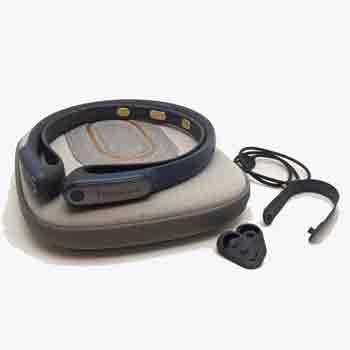

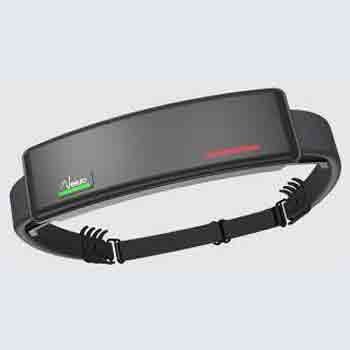
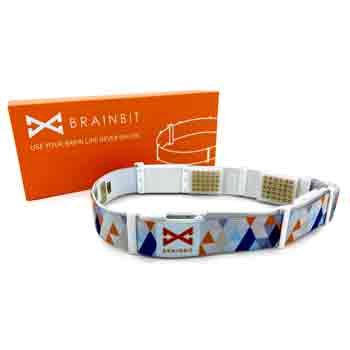
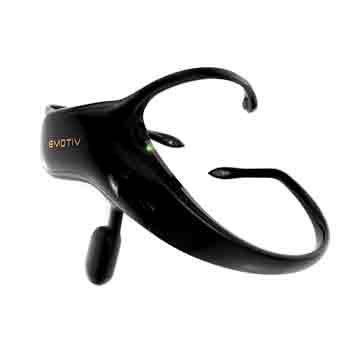

Home-Based EEG Systems
Home-based EEG systems are comprehensive setups that include an EEG amplifier, electrodes, and software for brainwave measurement and training. These systems offer excellent customization options, allowing users to target specific brainwave frequencies for various cognitive functions. Home-based systems often come with detailed data tracking and analysis tools, enabling users to monitor their progress over time. They provide a more professional-grade neurofeedback experience than wearable EEG headsets or smartphone apps but may require more technical knowledge for setup and use.
Virtual Reality (VR) Home Neurofeedback Devices
VR home neurofeedback devices integrate virtual reality technology to create immersive training experiences. Users wear VR headsets and engage in neurofeedback exercises presented in a virtual environment. These devices combine the benefits of neurofeedback with the engaging nature of VR, enhancing user motivation and focus during training. VR neurofeedback is especially useful for those seeking a unique and captivating training approach.
Specifications
The DSI-VR300 is the first-ever Active Dry EEG headset with an integrated VR Headset.
EEG Electrode location:
Fz, Pz, P3, P4, PO7, PO8, Oz, Linked Ears
It is a research-grade EEG system specifically designed for P300 applications and other research projects in the field of BCI (Brain-Computer Interface) and Neuropsychology, where VR (virtual reality) integration is required.
Specifications
Biofeedback & Neurofeedback
- Heart rate variability,
- electromyography,
- electrooculography, and
- electroencephalogram
CleverPoint 6
• 6 dry active EEG electrodes + 2 ref. electrodes
Locations AF3, AF4, FC5, FC6, T7, T8
CleverPoint 12
• 12 dry active electrodes + 2 ref. electrodes Locations AF3, AF4, F3, F4, C3, C4, P3, P4, O1, O2, T7, T8
Sphere of use
- Healthcare,
- Education, learning, and training,
- Professional orientation,
- Defense and aerospace
Specifications
- EOG – 2 channel
- Passive EEG – 2 channel (F7, AF8)
- Facial EMG – 4 channel
- Forehead PPG sensor
- Forehead EDA sensor
- Varjo Eye Tracking
- 8 channels of dry, active, EEG electrodes.
Location – Fz, Cz, Pz, P3, P4, Oz, O1, O2
Sphere of use
- Healthcare,
- Education, learning, and training,
- Professional orientation.
Non-EEG Home Neurofeedback Devices
Audio-Visual Entrainment (AVE) Devices
AVE devices utilize light and sound stimulation to encourage specific brainwave frequencies. They often synchronize light and sound patterns to guide the brain into desired states of relaxation or focus. AVE devices work well when combined with guided meditation or audio content. As a result, they become effective tools for stress reduction and cognitive enhancement.
Non-EEG wearables or “Brainwave sensing wearables. “
Non-EEG wearables utilize other physiological signals like heart rate, blood flow, or skin conductance. These signals help infer cognitive states and provide feedback. Specifically, they use algorithms to interpret these signals as indicators of mental states like focus, relaxation, or stress. Brainwave-sensing wearables offer a convenient and non-invasive option for monitoring cognitive states. However, it is essential to note that they may not deliver the same level of accuracy or detail in brainwave information as EEG-based devices.
One of the non-EEG wearables is the Mendi Headband. Mendi is a home neurofeedback device designed for home use. It uses a combination of near-infrared spectroscopy (NIRS) and neurofeedback to help users improve their mental fitness by measuring and training brain activity. Mendi measures oxygenated blood flow in response to neural activity in your prefrontal cortex.
Neuro VIZR is a cutting-edge cognitive enhancement device that utilizes flashing light therapy to optimize brain function and improve mental clarity. By harnessing specific light frequencies, Neuro VIZR stimulates targeted brainwave activity, promoting focus, relaxation, and overall cognitive performance. Designed for ease of use, this non-invasive device can be seamlessly integrated into daily routines, making it accessible to a wide range of users, from students and professionals to artists and athletes.
When the eyes are exposed to light pulses at specific frequencies, the brain’s electrical activity synchronizes with these rhythms, a phenomenon known as the photic driving response. This synchronization can alter brainwave patterns, promoting mental states such as relaxation, focus, or heightened alertness. NeuroVIZR uses the flashing light therapy principle to guide the brain into desired cognitive states by emitting light pulses at targeted frequencies.
Brainwave Meditation Devices
Brainwave Meditation Devices combine neurofeedback with guided meditation sessions, providing feedback on brainwave patterns during meditation to enhance the practice.
Brain Training Apps
Brain Training Apps use biofeedback techniques, including heart rate variability (HRV) and galvanic skin response (GSR), to measure stress levels and promote relaxation.
Integrated Wellness Platforms
Integrated wellness platforms combine multiple biofeedback modalities, including heart rate monitoring, sleep tracking, and neurofeedback, to provide comprehensive wellness insights and training programs. These platforms aim to provide a holistic approach to improving overall well-being and cognitive performance.
Some integrated platforms may also include additional features, such as cognitive training exercises, mood tracking, and personalized coaching, to support overall well-being.
It’s important to note that while EEG-based home neurofeedback devices offer direct brainwave measurement, non-EEG devices rely on physiological signals that may indirectly correlate with cognitive states. Each group has its unique strengths and limitations, and users should choose the most appropriate neurofeedback home device based on their preferences, needs, and specific cognitive or emotional goals. Seeking professional advice and considering user reviews can also help make an informed decision.
Considerations for selecting the right device for neurofeedback at home
Choosing the Right Neurofeedback Device for Home Use
A suitable device for neurofeedback at home is essential to ensure a safe, effective, and enjoyable experience. Several key considerations should be taken into account when choosing the most suitable neurofeedback device:
- Type of Neurofeedback: Determine the type of neurofeedback you wish to engage in. Some devices focus on specific brainwave frequencies, while others may offer a broader range of training options. Understand your goals and the specific cognitive or emotional functions you want to target.
- User-Friendliness: Look for a user-friendly device that is easy to set up and operate. Clear instructions and intuitive interfaces will make the neurofeedback process more enjoyable.
- Compatibility: Ensure the home neurofeedback device is compatible with your specific hardware and operating system. To avoid compatibility issues, check if it supports your computer, smartphone, or tablet.
- Feedback Format: Consider the type of feedback the device provides. Some devices use visual cues like games or graphs, while others use auditory cues like sound or music. Choose the feedback format that resonates with you and keeps you engaged during training.
- Sensors and Electrodes: Check the type and quality of the sensors or electrodes used to measure brainwave activity. High-quality sensors can improve the accuracy of the neurofeedback data and provide more reliable training outcomes.
Additional Considerations for Selecting a Home Neurofeedback Device
- Training Programs: Assess the variety and depth of the device’s training programs. Look for programs that address your needs and interests, such as stress reduction, focus enhancement, or mood regulation.
- Customization Options: A suitable neurofeedback device should allow customization to adapt to your unique brainwave patterns and training preferences. The ability to adjust difficulty levels and session duration can enhance the effectiveness of the training.
- Data Recording and Analysis: Consider whether the device records and stores training data for later analysis. Data tracking can help monitor progress and adjust the training program as needed.
- Safety Features: Ensure the device includes safety features to prevent potential risks, such as built-in measures to avoid excessive brainwave training or guidelines for safe use.
- Research and Reviews: Look for devices with positive user reviews and testimonials. Research the scientific evidence supporting the device’s efficacy and consult with experts or professionals familiar with neurofeedback technology.
- Cost and Value: Evaluate the neurofeedback device’s price and compare it with its features and benefits. Consider the long-term value it provides in achieving your cognitive and emotional goals.
- Customer Support: Check if the manufacturer provides reliable customer support and assistance for technical issues or inquiries.
- Warranty and Return Policy: Review the device’s warranty and return policy to ensure you have recourse in case of defects or dissatisfaction.
Choosing the Right Neurofeedback Device for Home Use
By carefully considering these factors, you can make an informed decision and select a home neurofeedback device that aligns with your goals, preferences, and lifestyle, maximizing the benefits of neurofeedback training at home.
Practical guidelines for effective utilization of neurofeedback at home devices
Preparing for Successful Neurofeedback Training at Home
Utilizing neurofeedback at home requires consistency, mindfulness, and adherence to best practices. Here are practical guidelines to help you make the most of your neurofeedback training:
- Set Clear Goals: Define specific goals for your neurofeedback training. Whether you want to improve focus, reduce stress, or enhance creativity, having clear objectives will help you track progress and stay motivated.
- Consistent Training Schedule: Establish a regular training schedule. Consistency is key to achieving meaningful results. Aim for short, frequent sessions rather than sporadic long sessions.
- Quiet and Distraction-Free Environment: Choose a quiet and distraction-free environment for your training sessions. Minimize interruptions and create a peaceful space conducive to relaxation and focus.
- Relaxation Techniques: Before starting a neurofeedback session, practice relaxation techniques like deep breathing or meditation to calm your mind and body.
Optimizing Your Neurofeedback Sessions
- Correct Electrode Placement: If your device requires electrode placement, follow the instructions precisely to ensure accurate brainwave measurement.
- Stay Relaxed during Training: Try to maintain a relaxed state during the neurofeedback session. Avoid unnecessary tension or overthinking. Let the training process flow naturally.
- Respond to Feedback Mindfully: Pay attention to the feedback provided by the device. Engage with the visual or auditory cues mindfully and try to respond naturally to achieve the desired brainwave patterns.
- Stay Patient and Persistent: Neurofeedback results may take time. In some cases, they may last several months. Be patient and persistent, and don’t get discouraged if progress is gradual. It is a learning process based on the brain’s neuroplasticity. Rewiring the brain with new connections requires time and persistent repetition.
Tracking Progress and Maintaining Healthy Practices
- Keep a Training Journal: Maintain a training journal to track your experiences and observations during sessions. Note any changes in focus, mood, or cognitive abilities over time.
- Avoid Multitasking: During training, avoid multitasking or engaging in other activities. Focus solely on the neurofeedback exercise to optimize the training’s effectiveness.
- Seek Professional Guidance: If you encounter challenges or have specific concerns, seek guidance from a qualified neurofeedback professional or healthcare provider.
- Monitor Progress: Use your device’s data-tracking features to monitor progress. Observe changes in brainwave patterns and performance to evaluate the effectiveness of your training.
- Listen to Your Body: Pay attention to how your body responds to the neurofeedback sessions. If you feel uncomfortable or experience any adverse effects, pause the training and seek advice from a professional.
- Stay Hydrated and Well-Rested: Adequate hydration and rest are essential for optimal brain function. Stay hydrated and get enough sleep to support your neurofeedback training.
- Balance with Other Practices: Neurofeedback can complement mindfulness meditation, exercise, and a healthy lifestyle. Integrate neurofeedback training with other self-care activities for holistic benefits.
Remember that neurofeedback at home is a supplementary tool and not a replacement for professional medical or psychological treatment when needed. If you have any medical or mental health concerns, consult a healthcare professional before starting neurofeedback training. Enjoy the process, stay committed, and embrace the journey of self-discovery and cognitive improvement with neurofeedback at home.
FAQs: Neurofeedback at Home Devices
Yes, most home-use neurofeedback devices are safe when used correctly. However, people with severe medical or mental health conditions should consult a healthcare professional before starting.
Home neurofeedback can improve:
- Focus and concentration
- Stress and anxiety management
- Sleep quality
- Emotional regulation
- Memory and cognitive performance
- Peak performance in sports, arts, or academics
- EEG-based wearable headsets
- Home-based EEG systems with advanced analytics
- VR-integrated neurofeedback devices
- Non-EEG options, like Mendi and NeuroVIZR (using light, blood flow, or infrared technology)
- AVE (audio-visual entrainment) devices
- Brainwave meditation wearables
- Apps and integrated wellness platforms
Consider:
- Your goals (focus, stress relief, ADHD, performance, etc.)
- Type of device (EEG, VR, AVE, etc.)
- Ease of use and compatibility with your phone or computer
- Feedback type (visual/audio)
- Quality of sensors
- Reviews, research support, and customer service
Avoid or consult a professional if you:
- Have severe mental illness (e.g., psychosis, severe depression)
- Have epilepsy or a seizure disorder
- Are recovering from recent head trauma
- Have implanted medical devices (e.g., pacemakers)
- Are pregnant
- Are using it for children without supervision
Aim for 3–5 sessions per week, each lasting 15–30 minutes. Consistency is more important than duration. Track progress and adjust based on results.

